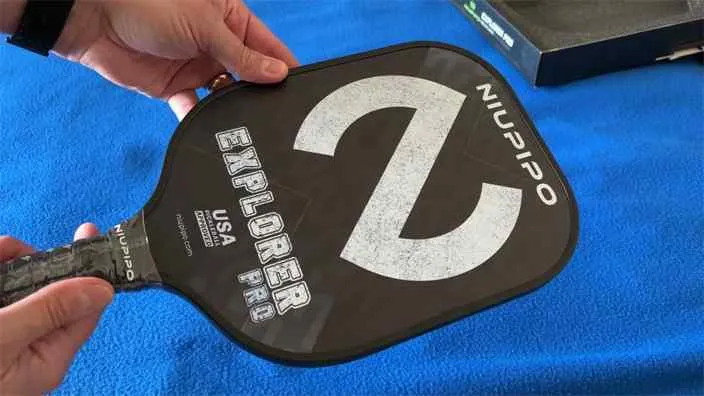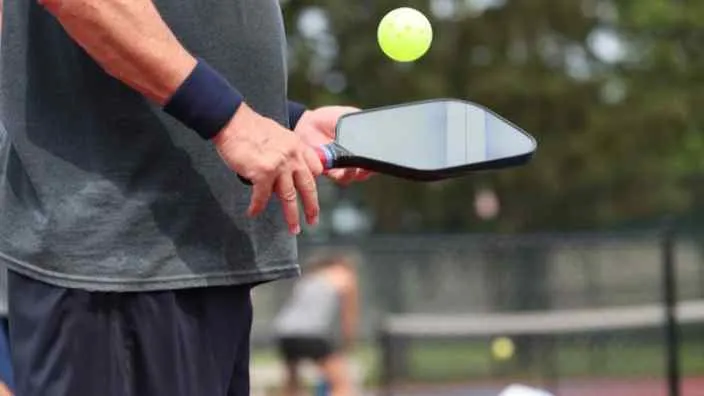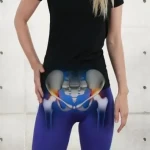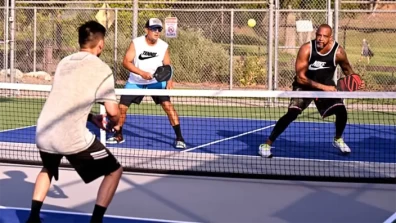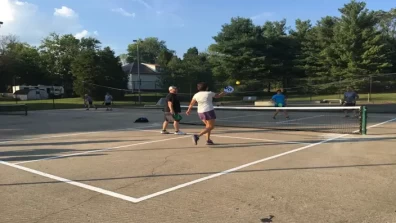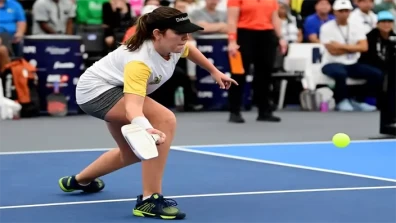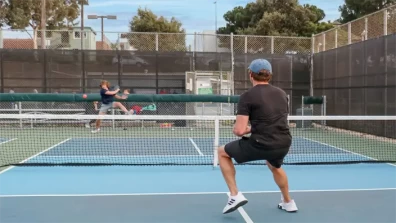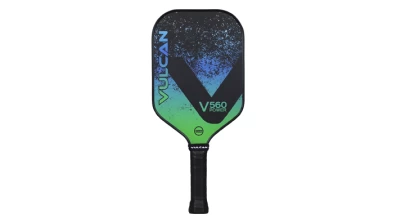Although pickleball is not a very complex sport and is pretty easy to learn and play, its rapid rise in popularity has brought a lot of variations to the game. You are no longer restricted to just using wooden paddles but can choose from a wide range of paddles. Choosing the right paddle can have a lot of impact. One might say it can make or break your game.
Two leading materials that dominate the market are graphite and fiberglass pickleball paddles. But do you know which one is better? Well, to be honest, I don’t think we can just nominate one. How about we explore their details together, do a side-by-side comparison, and let you be the judge of that? In this guide, I will be sharing detailed aspects about both types of paddles and doing an in-depth comparison. So, you will be able to decide which one you should choose.
Table of Contents
Graphite Pickleball Paddles
One of the common misconceptions in paddle sports is the association of weight with strength. People often think that with a heavier paddle, they will be able to land a more powerful shot. However, with the introduction of graphite paddles, that theory was really put to the test. Graphite pickleball paddles come in lightweight designs but still offer immense power to the user. That is one of the reasons many professional players prefer to play with these paddles.
If we look at the positive side, the graphite pickleball paddles do seem like a great choice. They have a lightweight nature, which means they will allow for quicker hand movements. Also, with a lighter weight, they will cause less strain on your wrists. Adding to this, their stiff surface provides excellent maneuverability and ball control. Due to the lightweight design, the paddle allows for a power boost, ensuring you can make quick shots.
However, the paddle doesn’t come without drawbacks. First of all, these paddles are expensive and also, they are not very long-lasting.
Fiberglass Pickleball Paddles
Fiberglass paddles on the other hand are more durable. They also come in a lightweight design and offer great maneuverability. That is the reason many of the casual players prefer to play with fiberglass paddles. These paddles allow you to make the learning curve less steep as the control of the game comes naturally to you. You are able to control the ball in a much better way.
Looking at the positives, the fiberglass paddles, aka composite paddles, last much longer. They are durable and can withstand tough impacts ensuring that you are able to use them for a longer time. Secondly, the control you get with these paddles helps you achieve absolute mastery in precision. The paddle offers pinpoint accuracy, allowing you to control the trajectory of the ball with every shot and make it go exactly where you want it to go. In terms of budget, they can be considered mid-range and cost average price. So, they are neither too expensive nor too cheap.
However, it also comes with its own set of cons. Firstly, in pursuit of higher precision, the fiberglass paddles sacrifice power. The impact will not be as intense as it will be with a wooden or graphite paddle.
Differences Between Graphite & Fiberglass Pickleball Paddles
When we compare these two paddles side-by-side, we come to know about various factors, which though appear similar in both, when put under a microscopic lens, reveal the true winner. So, let’s compare each feature of these paddles and see which one offers better quality.
1- Weight
Starting with the lightweight design, while both graphite and fiberglass pickleball paddles are considered lightweight, the former is a bit heavier. While the difference in weight is just an ounce or fraction of an ounce, it can matter a lot to a player seeking absolute perfection. Especially, players who have had wrist injuries, prefer to go with whichever offers less weight.
2- Power
Next comes power. In terms of power, the graphite paddles take the lead. Not primarily because of their slightly more weight, but rather the very nature of their impact. Graphite paddles pack more punch and offer stronger shots, providing an extra boost to the ball upon impact. On the other hand, the shots with fiberglass paddles are a bit less strong. So, for making consistently powerful shots and smashing through your opponents, the graphite ones are the more suitable choice.
3- Precision
However, what the graphite paddles offer in terms of strength, the sacrifice in terms of finesse and spin. While they do offer great maneuverability, they lack the pinpoint accuracy of fiberglass paddles. The texture of the fiberglass adds to the natural spin of the ball, allowing you to control the trajectory of the ball perfectly and shoot the ball exactly where you want it to go.
4- Durability
In terms of durability, both paddles are quite good. However, when compared side-by-side, fiberglass paddles last longer than graphite ones, mainly because of their composite materials. Graphite paddles, on the other hand, do not last as long. You can understand it based on their power and impact factor. Since the graphite ones are made for more power, they wear out much quicker. Fiberglass texture has a softer touch.
5- Price
Both graphite and fiberglass paddles are modern variants that are used in pickleball games. I would not consider either of them cheap. However, when we compare them side by side, the graphite paddles are slightly more expensive which puts it out of reach of beginner and casual players. Professional players prefer to use them. On the other hand, since fiberglass paddles are in the range of 50 dollars and under, they can be purchased by almost anyone.
You Might Also Like: How To Hit A Pickleball Harder
Pickleball Paddles Core Material - Graphite Vs. Fiberglass
If you are new to the world of pickleball, then do not confuse the surface material with the core. A graphite paddle isn’t made wholly of graphite. It has a different core material, and the hitting surface is covered with a graphite layer. The same goes for fiberglass. It is easy for one to get confused because of their name.
The graphite pickleball paddles can be made up of different kinds of core. For example, they can be made of polymer, rigid nylon, aluminum, Nomex honeycomb cores, etc. However, the fiberglass paddles do not feature a single core but rather rely on multiple core materials. Usually, it is a mixture of polyester and Nomex cores. That’s why they are also known as composite pickleball paddles. These cores offer a foam-like body to the core which offers a softer and more silent texture.
The Edge Guard Design - Another Important Feature
When you are looking at multiple pickleball paddles, you will come across two variants. One is known as edge guard and the other is known as edgeless. You might have already seen multiple edgeless designs as they are quite common, and the edge guard is a new variant. These designs are available in both graphite and fiberglass pickleball paddles.
The edge is typically made from rubber-like material that is attached to the edges to protect the edges and enhance the life of your paddle. These edges protect the paddle from wear and tear and allow them to last longer. They also increase the size of the paddle, giving you more surface to hit the ball.
Frequently Asked Questions
Should I Choose A Fiberglass Or Graphite Pickleball Paddle?
Well, the choice depends on you. If you have a good budget and want more power in your shots, then graphite paddles are a good option. However, if you are more concerned with precision than power, then fiberglass paddles are the best choice.
Is Fiberglass Or Carbon Fiber Better For Pickleball?
Again, the better choice will depend on a player’s personal preferences. Carbon fiber is more expensive than fiberglass but offers more power. On the other hand, fiberglass, while being cheaper, offers more flexibility and precision.
What Is The Difference Between Graphite & Carbon Fiber Pickleball Paddles?
Graphite paddles are made from a thin layer of graphite on the surface of the paddles that offers extra impact power to the short and provides you with more stiffness. On the other hand, carbon fiber pedals offer enhanced strength and responsiveness.
Conclusion
Now that we have established that both graphite and fiberglass paddles come with their own set of pros and cons, the final choice again rests with you. For me personally, I think one cannot know until one has used both of them in the game. It’s not just about the technicalities but rather the feel of the paddle. However, knowing more about both of them will help you make an informed decision. I would suggest that you choose wisely, as the choice will make or break your game. Choosing the right paddle will have a lot of impact on your play. So, take your time and evaluate your needs and budget. Remember, whichever you choose, both materials promise an exciting game.

